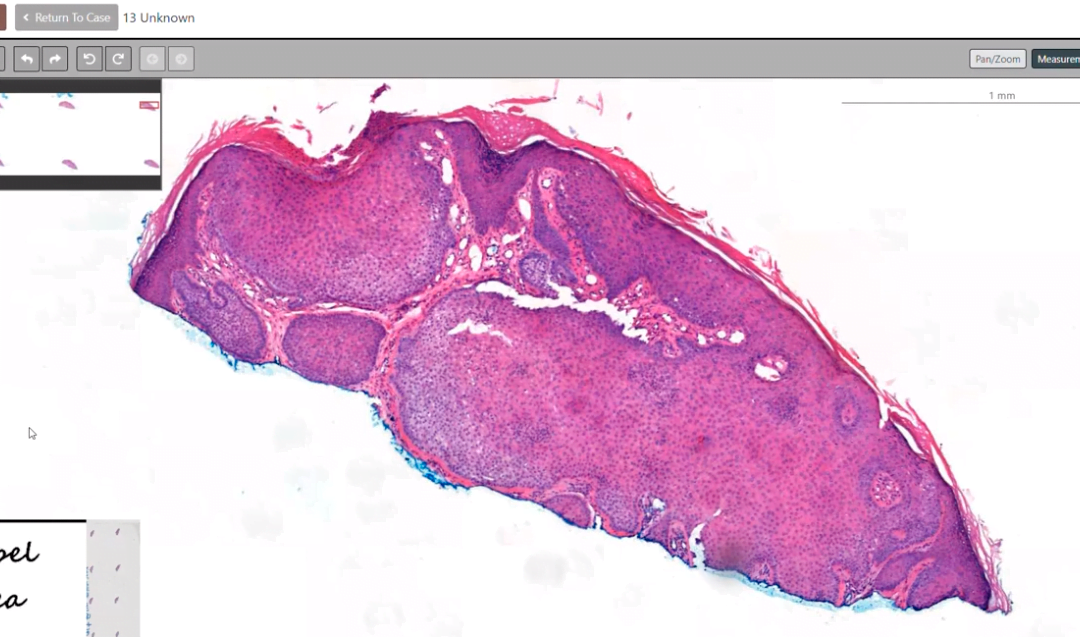Images shown are not intended to be used for the diagnosis or treatment of a disease or condition.
There are a number of different hair follicle tumors, each with its own distinguishing features. In the Digital Dermatopathology Digest series, Rajni Mandal, MD, clinical research associate in dermatopathology for PathologyWatch, discusses these different variants in greater detail.
Trichilemmal cells come from the outer root sheath of the hair follicle. The cells show abrupt keratinization and pink to clear cytoplasm with a lack of keratohyalin granules.
Trichilemmoma cells have a lobular proliferation of cells that can push into the dermis. They can also present as pink to clear due to glycogen, and there can be peripheral palisading at the periphery of the islands as well as a thick pink basement membrane deposition. Multiple trichilemmomas are associated with Cowden syndrome.
Trichoadenoma cells can have multiple epithelial islands of keratin-filled cysts in the dermis. These cysts can frequently rupture, shoring a foreign body giant cell reaction to keratin fibers. Cyst islands are lined by epithelium, and the majority of the squamous epithelium lacks keratohyalin granules.
Trichoblastoma cells typically have multiple blue islands with fibrotic stroma and are associated with nevus sebaceous.
Cells on the trichofolliculoma, fibrofolliculoma, and trichodiscoma spectrum are all different stages of the same tumor. They can present with branches of anastomosing epithelium originating out of the hair follicle and often occur in small antigen hair follicles.
- In a fibrofolliculoma, there can be a proliferation of fibrous cells or fibrous stroma, which can have a concentric pattern around the tumor.
- Fibrous proliferations are most prominent in a trichodiscoma.
- Cells can show peripheral palisading, but there is no retraction artifact or myxoid stroma surrounding them, which would be seen in basal cell carcinoma.
- Multiple fibrofolliculomas and trichodiscomas are commonly associated with Birt-Hogg-Dubé syndrome.
The Digital Dermatopathology Digest series provides educational information for both students and professionals on a number of topics. To view the complete series, click here.

